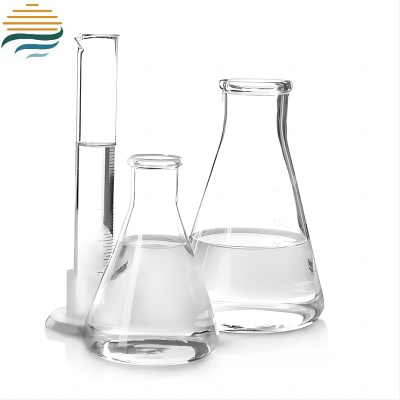How Transformer Oil Reclamation Restores Peak Efficiency
Transformer oil is fundamental to the efficient and safe operation of power transformers. Acting both as an insulator and a coolant, this oil—commonly referred to as transformer insulating oil—serves to dissipate heat and maintain dielectric strength within high-voltage systems. However, exposure to electrical stress, oxygen, and high temperatures leads to oil deterioration over time, resulting in the formation of acidic compounds, sludge, and moisture accumulation. These contaminants impair the oil’s insulating and thermal properties, increasing the risk of transformer failure.
To mitigate these risks and extend the lifespan of transformers, one of the most effective solutions is transformer oil reclamation. This article provides an in-depth look at the degradation process of transformer oil, the consequences of contaminated oil, and how reclamation restores performance while offering a sustainable and cost-effective alternative to oil replacement.
Understanding Transformer Oil Degradation and Its Impact
Transformer oil deteriorates naturally over time as it reacts with the surrounding environment and internal electrical stresses. This degradation primarily occurs due to oxidation and thermal decomposition, both of which generate unwanted byproducts.
As the oil ages, it becomes more acidic and develops sludge and polar compounds, which compromise the dielectric strength and overall reliability of the transformer. Contaminants can also migrate into the insulation, accelerating its degradation and complicating restoration efforts. If left untreated, aged oil can cause a cascade of operational failures:
1. Increased Dielectric Losses
With age and contamination, transformer oil becomes more conductive. This causes dielectric losses—leakage currents that lead to energy dissipation in the form of heat. These inefficiencies translate to higher energy costs and reduced system performance.
2. Reduced Dielectric Strength
A key property of transformer oil is its capacity to insulate between energised components. As oil degrades, its dielectric strength diminishes due to the presence of moisture, acids, and other polar contaminants. This heightens the risk of electrical discharges or arcing, potentially damaging internal components.
3. Moisture Ingress and Retention
Aged oil is less effective at repelling water, which can lead to internal moisture accumulation. Moisture acts as a conductor, reducing insulation integrity and increasing the chances of breakdowns. It can also facilitate internal corrosion and worsen the effects of oxidation.
4. Poor Heat Transfer
Sludge formed during oil degradation tends to deposit on internal components and impedes heat dissipation, causing transformers to overheat. Chronic overheating can lead to uneven expansion of components, accelerated oil breakdown, and derating of transformer capacity.
These problems are often interconnected. For example, sludge-induced overheating can increase oxidation, which in turn generates more acids and moisture. Therefore, addressing oil degradation at its early stages is essential to prevent long-term damage.
What Is Transformer Oil Reclamation?
Transformer oil reclamation is a restorative process aimed at renewing used transformer oil by removing moisture, acids, sludge, and other byproducts. Unlike complete oil replacement, which can be costly and environmentally taxing, reclamation is more sustainable and economical. It can typically be performed on-site using mobile oil purification units or rigs, and in many cases, it can even be conducted while the transformer remains energised—minimising operational disruptions.
The primary goal of reclamation is to restore the oil’s original dielectric and thermal properties, enabling it to function effectively as an insulator and coolant once more. By reclaiming rather than replacing oil, organisations not only reduce their environmental footprint but also extend the transformer’s service life without significant infrastructure costs.
Key Phases of the Oil Reclamation Process
Effective transformer oil reclamation comprises three main stages: oil testing, oil analysis, and the reclamation process itself.
1. Oil Testing
Before initiating reclamation, it is crucial to assess the condition of the oil through a series of standardised tests. These evaluations provide insights into the oil’s contamination levels and guide the treatment approach. Recommended tests include:
· Power Factor: Measures dielectric losses in the oil; high values indicate contamination or degradation.
· Acid Number: Indicates the concentration of acidic compounds due to oxidation.
· Interfacial Tension: Lower values suggest increased presence of oxidation products or contaminants.
· Dielectric Breakdown Voltage: Assesses the oil’s ability to withstand electrical stress without failure.
· Colour Test: A higher colour index typically indicates contamination or ageing.
These diagnostics are commonly included in power transformer oil testing protocols to ensure operational safety and efficiency.
2. Oil Analysis
After testing, the results must be interpreted in aggregate to accurately determine oil health. No single test provides a complete picture; rather, a holistic assessment is essential.
According to IEEE Std C57.637-2015, oils are categorised into two groups:
· Group I: Oils suitable for reconditioning (mechanical purification).
· Group II: Oils in poor condition, necessitating full reclamation or disposal depending on economic factors.
This classification informs the maintenance strategy and helps determine whether reclamation is a viable option.
3. The Reclamation Process
When reclamation is the preferred route, it involves both mechanical and chemical treatment to restore the oil’s functionality. As outlined in IEEE Std C57.637-2015, the distinction between reconditioning and reclamation is critical:
· Oil Reconditioning: Mechanical removal of dissolved gases, moisture, and particulate matter.
· Oil Reclamation: Chemical and adsorptive removal of acidic, polar, and sludge-forming substances.
A complete reclamation process should include the following components:
a. Heat Treatment
Oil is heated to facilitate moisture migration from insulation materials into the oil. It also helps dissolve sludge within the transformer, making it easier to extract during processing. Performing reclamation on energised transformers aids this process by utilising existing load-generated heat.
b. Vacuum Degassing and Dehydration
The heated oil is routed through a vacuum column to remove dissolved gases, moisture, and volatile acids. Maximising the surface area in this step improves efficiency. Continuous vacuum operation ensures that moisture removed from the paper insulation does not re-enter the transformer.
c. Fuller’s Earth Treatment
The oil then passes through a bed of Fuller’s Earth—a naturally occurring clay known for its high adsorption capacity. It effectively removes acids, sludge, alcohols, and carbon particles. This step enhances interfacial tension and power factor while reducing acid content.
d. Inhibitor Reinjection
Many transformers operate with oxidation inhibitors. During reclamation, these inhibitors are stripped from the oil. Therefore, a fresh dose of a suitable antioxidant additive is injected into the reclaimed oil during its final return to the transformer, helping to slow future degradation.
e. Filtration Stages
To ensure that no metallic or foreign particles return to the transformer, the oil passes through a series of filters. The final stage often includes a 0.5-micron filter to remove any residual particulates. This is crucial to avoid introducing contaminants that could interfere with insulation performance or cause mechanical wear.
Notably, transformer oil reclamation is one of several preventive maintenance strategies that can complement broader electrical equipment servicing programs, such as electric motor overhauling, ensuring the longevity of an entire power distribution system.
Conclusion
Maintaining high-quality transformer oil is not just about preserving the oil itself—it is essential for protecting the entire transformer system. As contaminants accumulate, they jeopardise the reliability, efficiency, and longevity of the equipment. Transformer oil reclamation offers a comprehensive, cost-effective, and eco-conscious solution to these challenges, enabling facility managers to prevent costly outages, extend asset life, and maintain uninterrupted power delivery.






